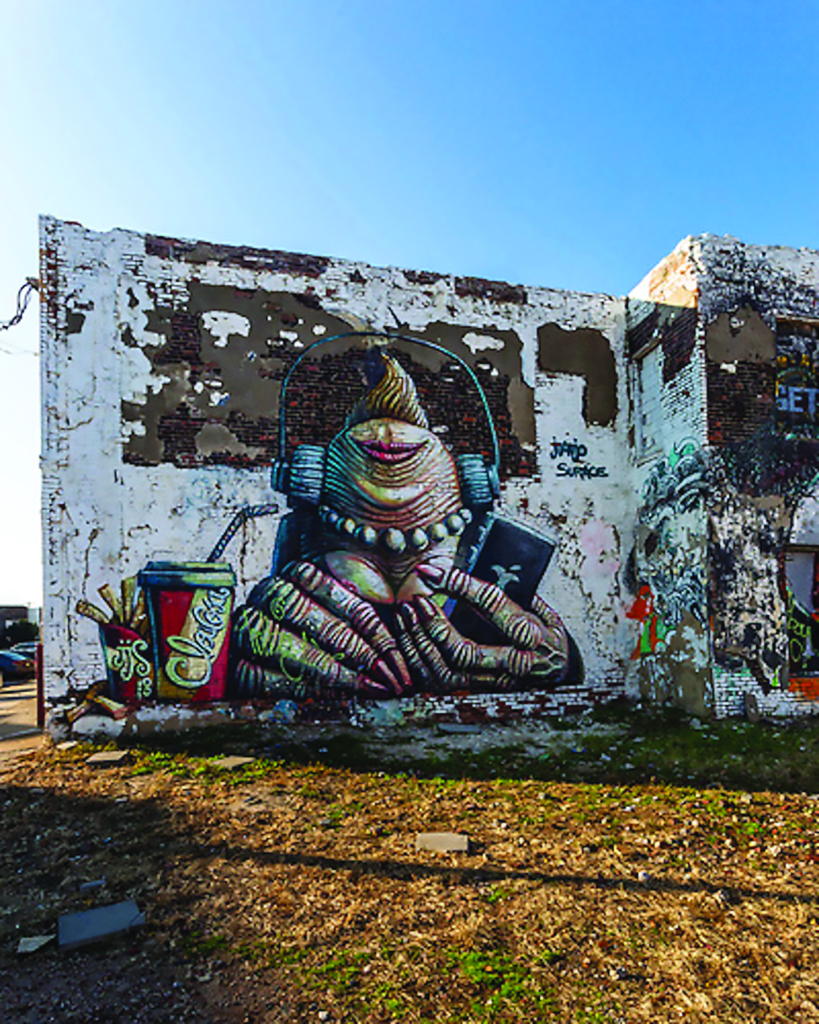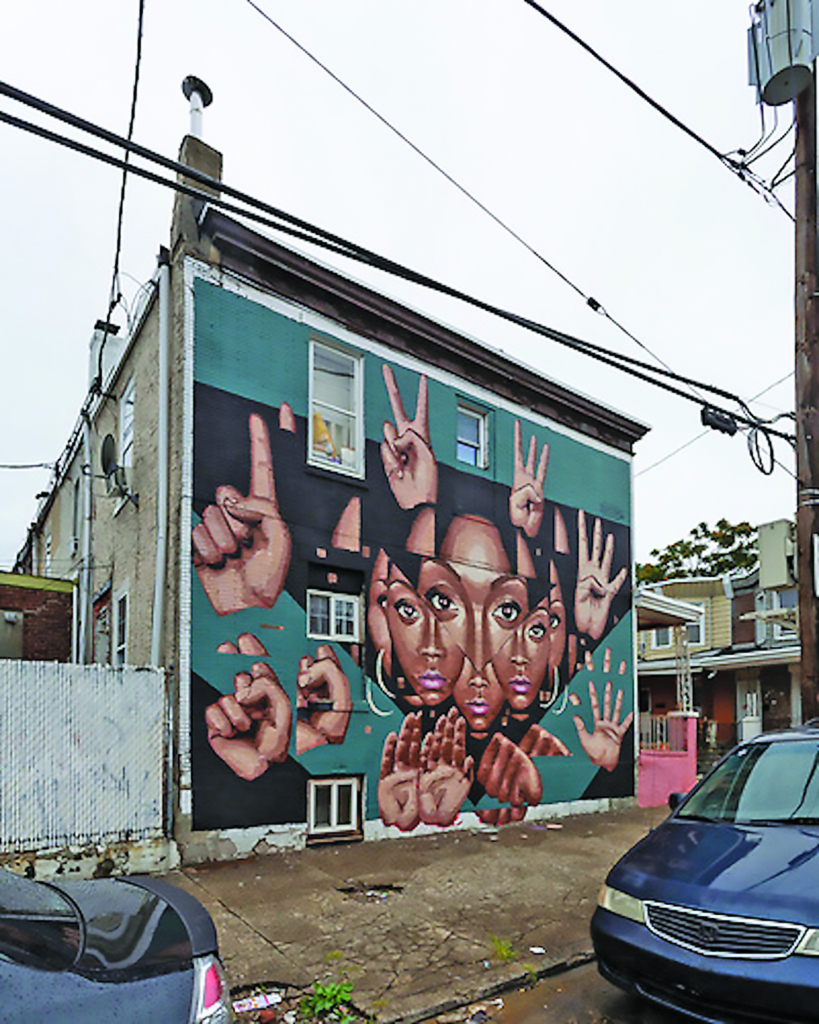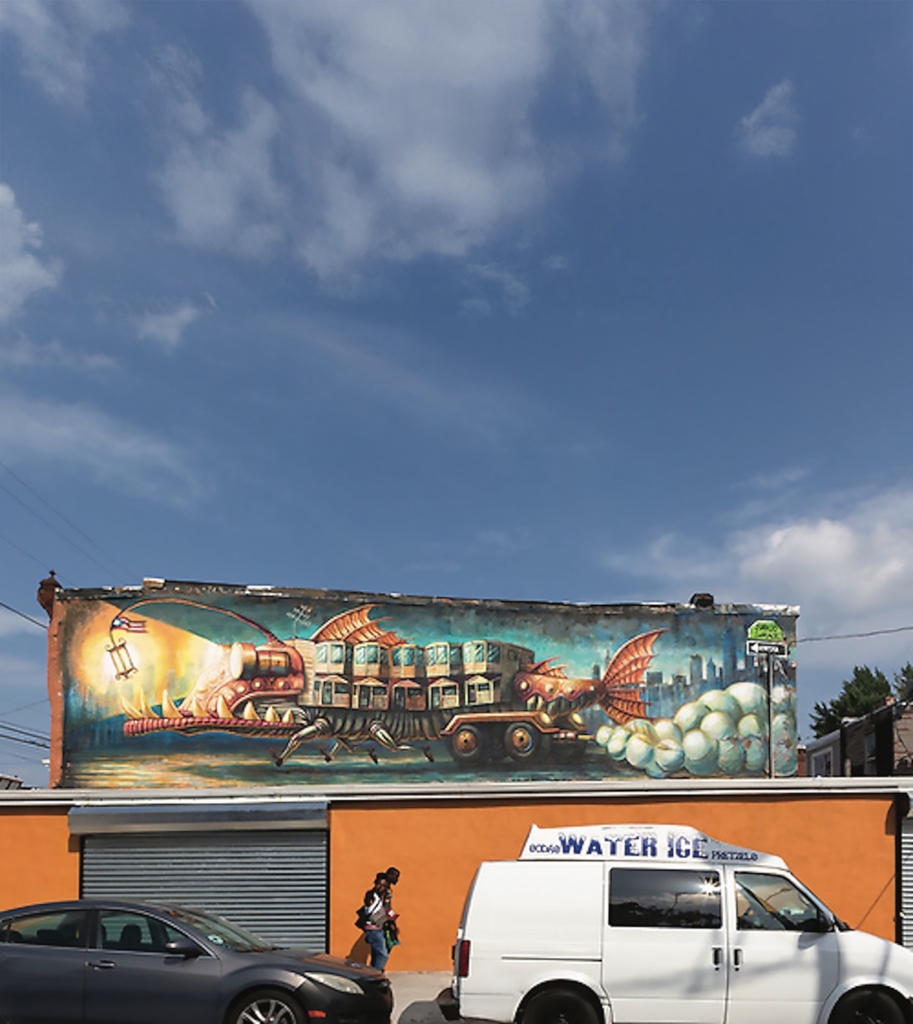The walls of 200 Poplar Street in North Philadelphia erupted in form and color.
What had once been a quiet, weathered stretch of brick in the summer of 2018 became a temporary portal into the imaginations of artists Simon Vasquez and Juanjo Suarce.
Their untitled murals, part of the experimental project K-Town Lab, were not merely paintings on walls, they were acts of communion, fleeting gestures of trust between artists and neighborhood, between surface and soul.
K-Town Lab began in 2017 as a conversation among street artists Claudio Ethos and Ru8icon1, both of whom had worked in Philadelphia and were drawn to its raw, open character.
In a serendipitous meeting with Jane Golden, executive director of Mural Arts Philadelphia, the idea of a “laboratory” for street painters began to take shape. It would be a summer-long, three-month experiment in collaborative mural making: no corporate sponsors, no glossy walls, no monumental tourist landmarks.
The aim was smaller, stranger, more intimate, to embed art directly into the neighborhood fabric – residential, reachable and real. The team used spray paint for
the temporary murals and erected them on sides of old buildings and moving trucks around the Kensington area.



The project’s guiding principles read like a manifesto for grassroots creation: Keep teams small, murals to human scale; paint only in neighborhoods, not commercial corridors; expect and even welcome the graffiti that will inevitably layer over the work.
It was understood that paintings in the laboratory would be tagged; graffiti writers were there first. It’s a radical humility, rare in public art, acknowledging that walls have their own histories and that artistic authorship in the street is always shared.
At 200 Poplar St., Vasquez and Suarce brought that philosophy to life. Their murals blended surreal figuration with bursts of color and line, evoking hybrid creatures and half-human mythologies – legendary monsters, in the best sense – drawn from imagination and subconscious.
Their works pulsed with movement, mirroring the energy of Kensington and Norris Square, where children played on stoops and trains hummed overhead. Passersby stopped to ask questions or to help hold ladders.
Conversations became as much part of the mural as the paint itself.
For the artists, K-Town Lab offered more than a canvas; it was a temporary home, a lesson in coexistence. It was about learning to listen. Vasquez and Suarce spent long days painting under the summer sun, eating from corner delis, absorbing the rhythm of the block.
When the project concluded three months later, the duo felt altered, as though they had participated in something both ephemeral and eternal.
“After the project was completed, they returned to the lives they were living before, but were not the same,” a Mural Arts documentation notes. “It was time to reflect, contemplate and discuss the lessons learned.”
The murals at 200 Poplar are gone now – lost to demolition around 2022 – but their spirit lingers in photographs, videos and memories. In footage from Murals on the Fly, you can see the way sunlight hits the wall, the paint catching motes of dust in the air.
There is laughter off-camera, the hum of traffic and the soft scrape of brush on brick. Each frame preserves the fleeting transcendence of process: art not as product, but as ongoing dialogue.
The loss of the wall underscores the very premise of K-Town Lab, namely that art in public spaces is never static. It belongs to the moment, to those who witness it, and to the city that inevitably changes.
The project’s emphasis on being residential and on site reminds us that murals, like communities, live and die in cycles of renewal.
When the wall came down, the mural didn’t disappear, it made its way back into the neighborhood, into the stories of those who saw it rise.
In the end, K-Town Lab was less a place than a state of mind, a belief in art’s capacity to transform, however briefly, the ordinary spaces of daily life. Its legacy is not just in the photographs archived by Mural Arts Philadelphia or the Public Art Archive, but in the conversations sparked between residents and visiting artists, with the idea that painting can be both an act of resistance and of reverence.
The walls may be gone, but the laboratory continues – wherever artists meet neighborhoods with open eyes and paint becomes a language of shared becoming.

